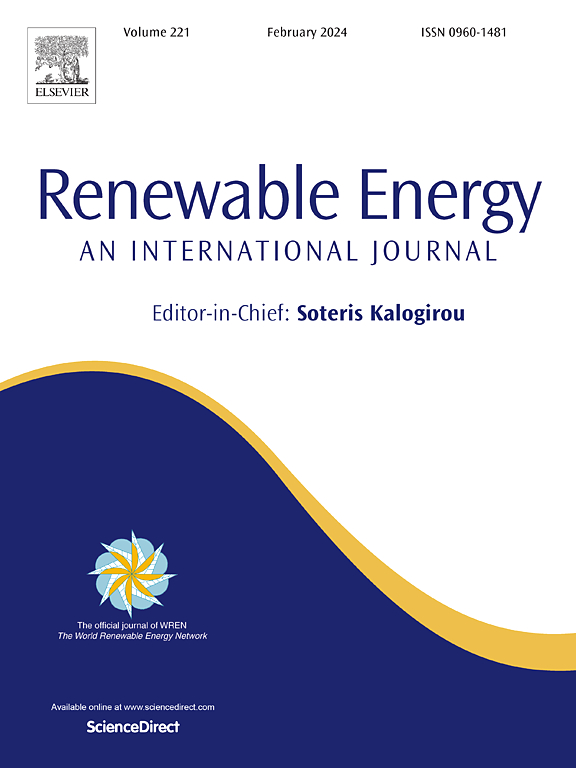垂直排列NiFeP@Ni纳米管用于绿色氢和硫的高效电化学生产:循环经济满足可持续能源
IF 9.1
1区 工程技术
Q1 ENERGY & FUELS
引用次数: 0
摘要
在工业世界中,大量的硫化氢(H2S)是由于加工化石燃料(如天然气、石油和煤炭气化)而产生的一种不需要的废物。这就需要一种更环保的方法将其转化为更有价值的产品,如氢(H2)和硫(S)。本文采用可扩展的电化学合金化-脱合金方法在泡沫镍上制备了自生垂直排列的多孔镍纳米管。利用磷基材料优异的催化活性,采用电化学沉积技术制备了NiFeP纳米复合材料。制备的复合材料在Ni纳米管上呈现垂直排列的纳米片,有效地增加了电极的活性位点。制备的电极具有良好的阳极硫氧化反应(SOR)和阴极析氢反应(HER)。硫氧化反应的起始温度为0.093 V vs RHE,比析氧反应的热力学势(1.23 V)低1.13 V。在0.7 V电池电压下,测量了双功能电解槽中同时用于HER和SOR的NiFeP@Ni@NF电极在25 h的时间间隔内的稳定性。这项工作提供了一条低成本、大规模的从工业副产品合成氢的途径,提出了一种新的方法,在回收危险硫化物废物的同时有效地制造氢。本文章由计算机程序翻译,如有差异,请以英文原文为准。
Vertically aligned NiFeP@Ni nanotubes for efficient electrochemical production of green hydrogen and sulfur: Circular economy meets sustainable energy
A massive quantity of hydrogen sulfide (H2S) is produced in the industrial world as an unwanted waste due to the processing of fossil fuels, such as natural gas, petroleum, and coal gasification. This necessitates a more environmentally friendly method for its conversion into more valuable products, such as hydrogen (H2) and sulfur (S). Herein, the scalable electrochemical alloying-dealloying approach is used to prepare the self-generated vertically aligned porous Ni nanotube on Ni foam. Benefiting from the excellent catalytic activity of phosphorus-based materials, NiFeP nanocomposite is fabricated using the electrochemical deposition technique. The fabricated composite illustrates the vertically aligned nanosheets on the Ni nanotubes, which efficiently increases the active sites of the electrode. The fabricated electrodes demonstrate excellent anodic sulfur oxidation reaction (SOR) and cathodic hydrogen evolution reaction (HER). The sulfur oxidation reaction was initiated at 0.093 V vs RHE, which is 1.13 V less than the thermodynamic potential of the oxygen evolution reaction (1.23 V). The stability of NiFeP@Ni@NF electrode for simultaneous HER and SOR in bi-functional electrolyser was measured for time interval of 25 h at 0.7 V cell voltage. This work provides a route for low-cost, large-scale hydrogen synthesis from industrial by-products by presenting a novel approach for effectively manufacturing hydrogen while recycling hazardous sulfide waste.
求助全文
通过发布文献求助,成功后即可免费获取论文全文。
去求助
来源期刊

Renewable Energy
工程技术-能源与燃料
CiteScore
18.40
自引率
9.20%
发文量
1955
审稿时长
6.6 months
期刊介绍:
Renewable Energy journal is dedicated to advancing knowledge and disseminating insights on various topics and technologies within renewable energy systems and components. Our mission is to support researchers, engineers, economists, manufacturers, NGOs, associations, and societies in staying updated on new developments in their respective fields and applying alternative energy solutions to current practices.
As an international, multidisciplinary journal in renewable energy engineering and research, we strive to be a premier peer-reviewed platform and a trusted source of original research and reviews in the field of renewable energy. Join us in our endeavor to drive innovation and progress in sustainable energy solutions.
 求助内容:
求助内容: 应助结果提醒方式:
应助结果提醒方式:


